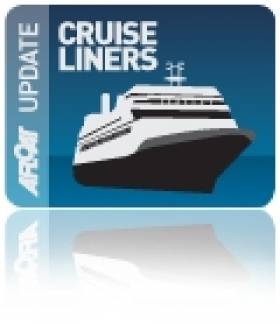Displaying items by tag: Lindblad Expeditions
#FORMER IRISH PRESIDENT ON CRUISE – Former President of Ireland, Mary Robinson was a guest speaker on board the National Geographic Explorer during the first leg of a 14-day 'Exploring the British Isles and Irish Isles' cruise which departed the UK last week, writes Jehan Ashmore.
The theme of the lecture was about the perspective and context of 'modern' Ireland which formed part of the 'Global Perspective Programme' organised by the cruise operator Lindblad Expeditions.
Robinson who was also a former UN High Commissioner for Human Rights was also a guest speaker on the same vessel a year ago, where she shared her insights on what was then the recent historic visit of Queen Elizabeth II to Ireland.
The 148 passenger cruiseship is today on the start of an itinerary of the western Scottish Isles, having passed yesterday evening the 2,000-foot Slieve League, the highest sea-cliffs in Europe. The 6,471 tonnes vessel departed Killybegs from where her guests travelled to Glencolumbkille.
In addition she had anchored earlier in the morning between Inishmurray Island and Grange, Co. Sligo. The 228-acre island which has a 6th century monastery was inhabited until abandoned in 1948.
Since the cruise began in Portsmouth the vessel has called to several locations and the Irish west coast to the Skelligs, Dingle Peninsula, Kilronan on Inishmore of the Aran Islands and Cliffs of Moher.
It is to such destinations that are typically visited by Lindblad Expeditions in partnership with the National Geographic Society (NGS) which produces the renowned monthly magazine. At isolated and more inaccessible destinations passengers make shore excursions using Zodiac tenders.
In addition to hosting forums such as the Global Perspective Programme, the strategic alliance with NGS enables renowned experts from the society scientists, naturalists and photographers to accompany guests on visits to field sites that include those committed in sustainable geo-tourism.
National Geographic Explorer was built as Midnatsol in 1982 for Hurtigruten of the Norwegian Coastal Voyages. She is ice-strengthened and is the largest of the Lindblad fleet.
Several years ago the interiors were completely gutted-out in a Spanish dry-dock, resulting in an essentially different ship for her new role with many high-tech features and equipment incorporated. The most impressive being a remotely operated vehicle, or ROV, which can dive 1,000 feet below the ice.





























































